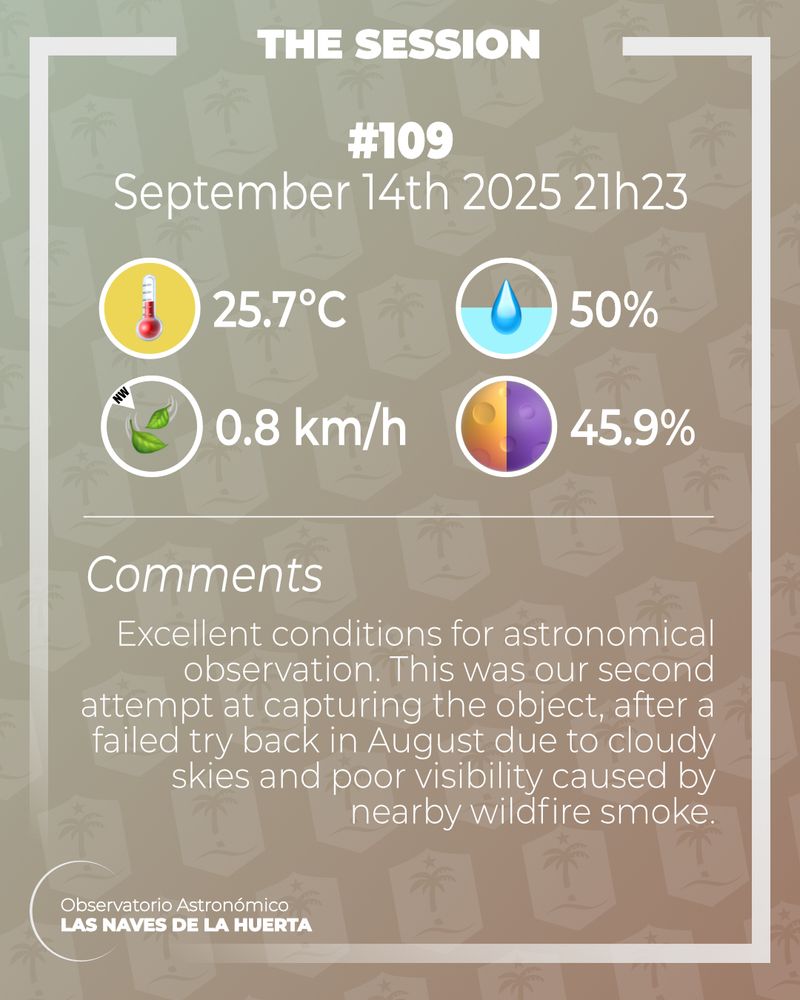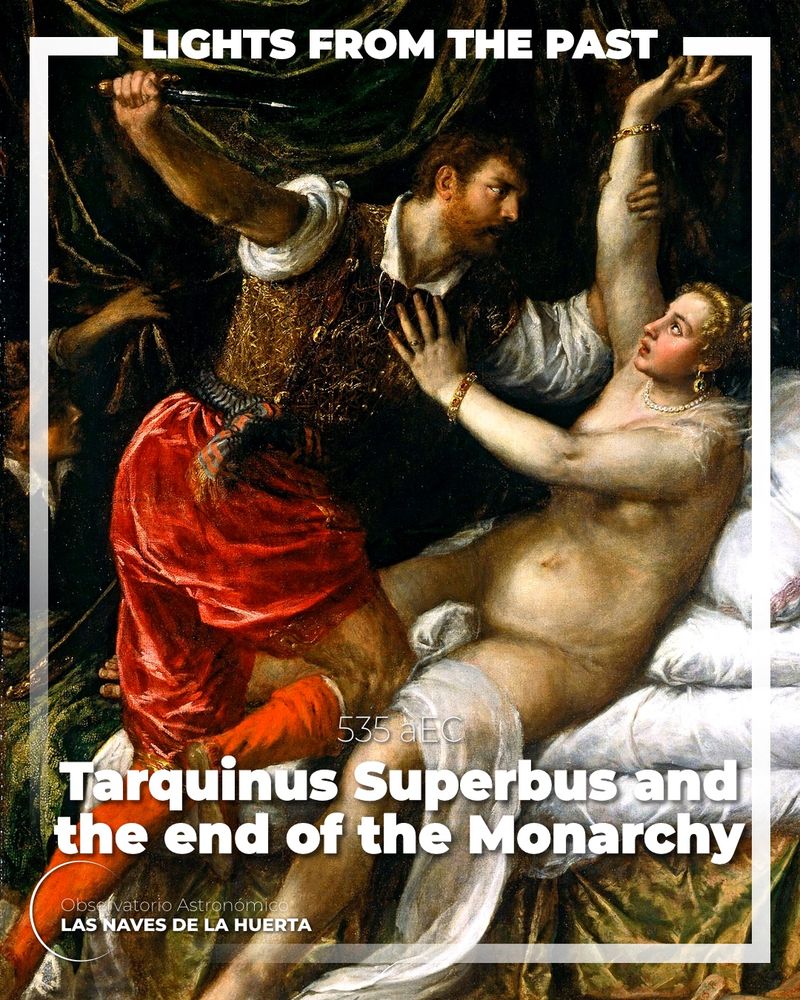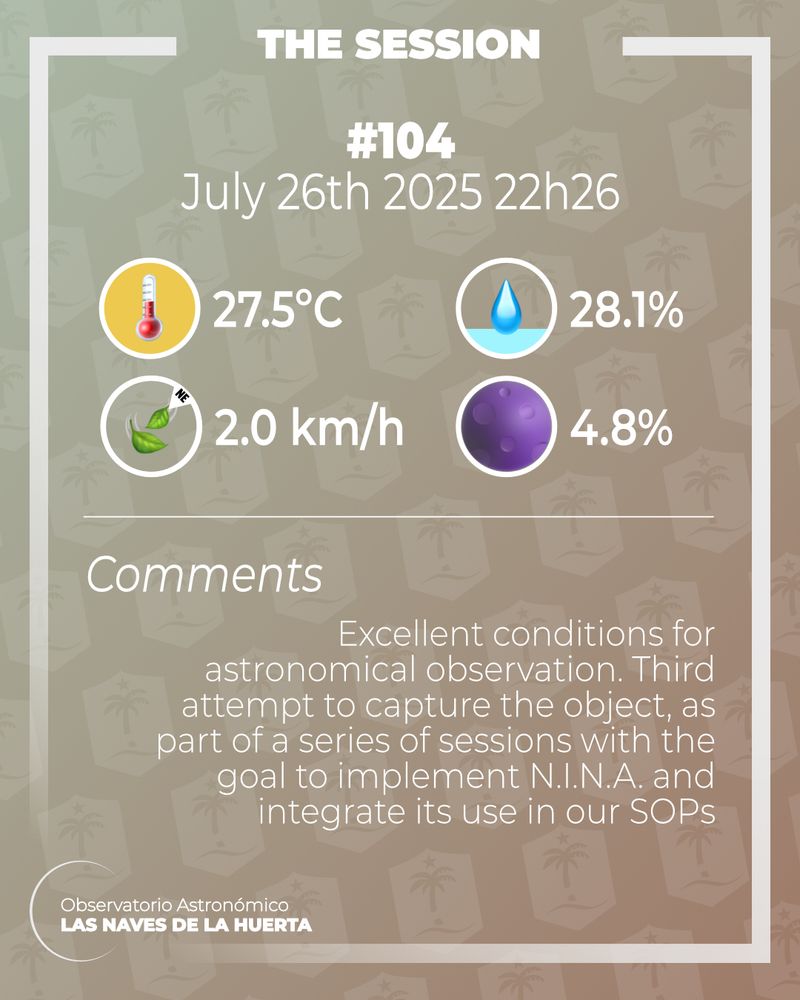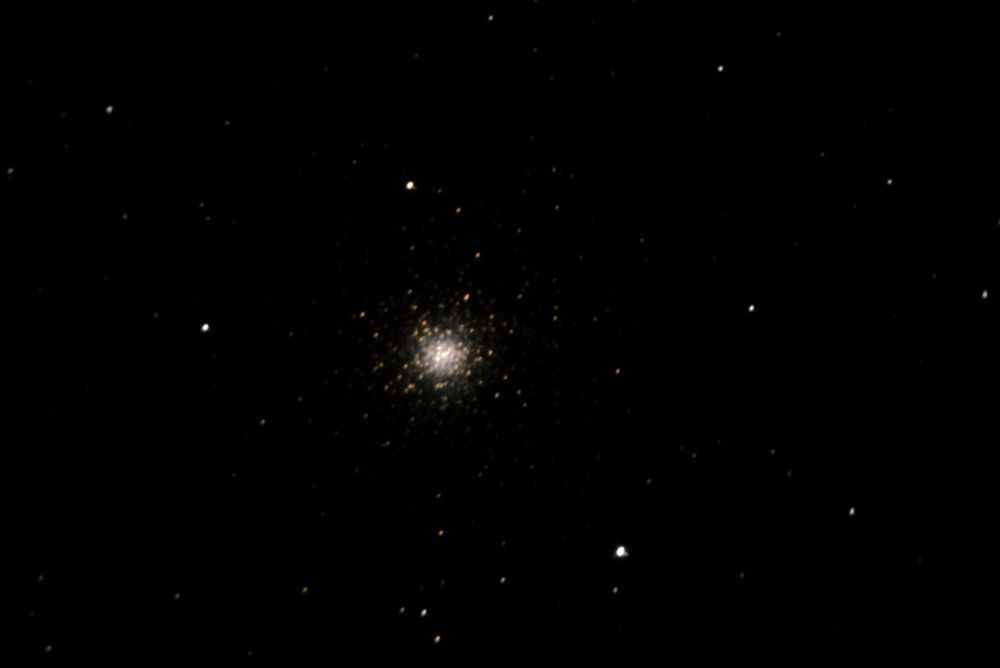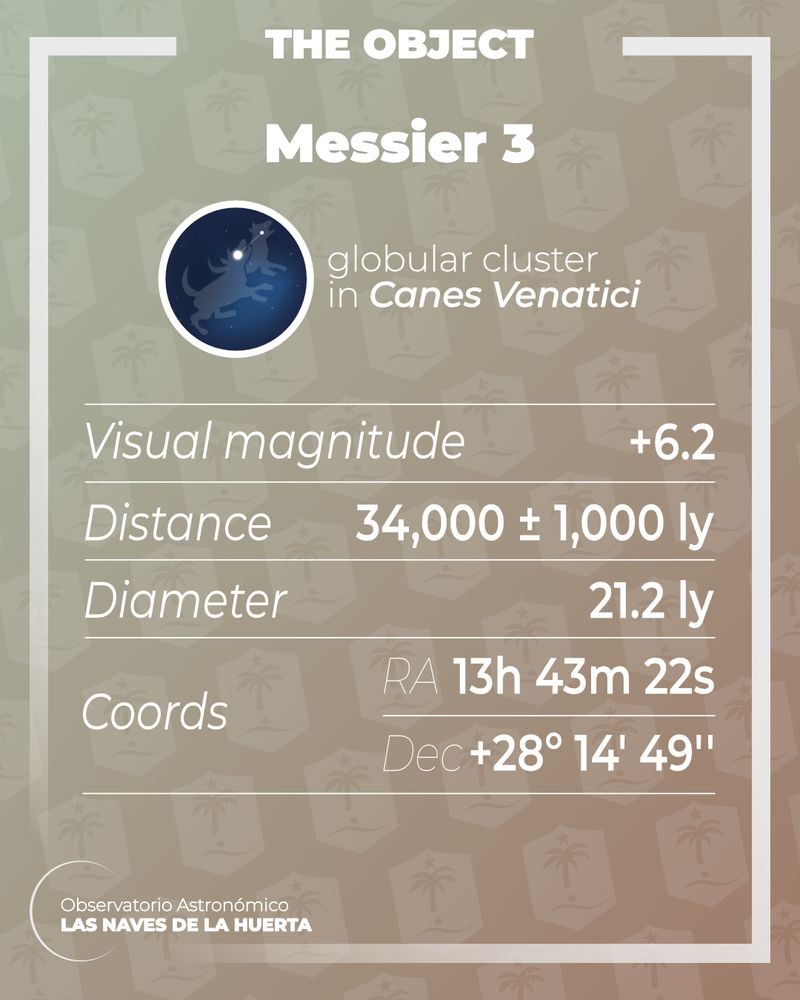
🌌 Basic astrophotography, little to no post-processing
📚 With a pinch of evidence-based Astronomy and History curiosities.
We speak 🇪🇸🇬🇧🇵🇹
by @dbriegasfh.bsky.social
#Astrophotography
flic.kr/p/2rtvQdQ
#astrophotography #astrofotografía #M27 #DumbbellNebula #nebulosa #Cassegrain #DeepSky #espacio #universo #astronomy #telescopio #astrofísicos #cosmos
flic.kr/p/2rtvQdQ
#astrophotography #astrofotografía #M27 #DumbbellNebula #nebulosa #Cassegrain #DeepSky #espacio #universo #astronomy #telescopio #astrofísicos #cosmos

